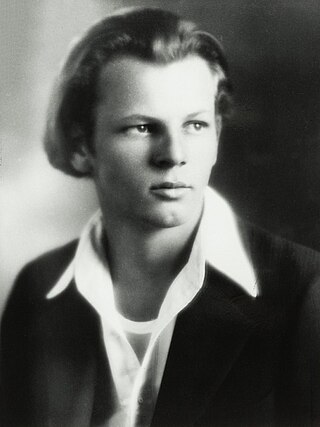
Paul Jackson Pollock was an American painter. A major figure in the abstract expressionist movement, Pollock was widely noticed for his "drip technique" of pouring or splashing liquid household paint onto a horizontal surface, enabling him to view and paint his canvases from all angles. It was called all-over painting and action painting, since he covered the entire canvas and used the force of his whole body to paint, often in a frenetic dancing style. This extreme form of abstraction divided the critics: some praised the immediacy of the creation, while others derided the random effects. In 2016, Pollock's painting titled Number 17A was reported to have fetched US$200 million in a private purchase.

Thomas Hart Benton was an American painter, muralist, and printmaker. Along with Grant Wood and John Steuart Curry, he was at the forefront of the Regionalist art movement. The fluid, sculpted figures in his paintings showed everyday people in scenes of life in the United States.
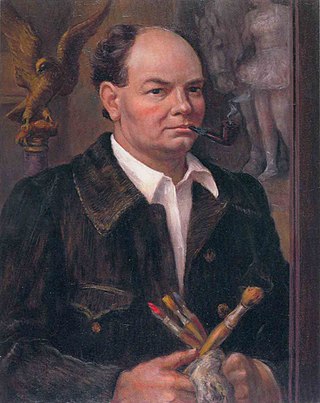
John Steuart Curry was an American painter whose career spanned the years from 1924 until his death. He was noted for his paintings depicting rural life in his home state, Kansas. Along with Thomas Hart Benton and Grant Wood, he was hailed as one of the three great painters of American Regionalism of the first half of the twentieth century. Curry's artistic production was varied, including paintings, book illustrations, prints, and posters.

James David Brooks was an American Abstract Expressionist, muralist, abstract painter, art teacher, and winner of the Logan Medal of the Arts.

American Regionalism is an American realist modern art movement that included paintings, murals, lithographs, and illustrations depicting realistic scenes of rural and small-town America primarily in the Midwest. It arose in the 1930s as a response to the Great Depression, and ended in the 1940s due to the end of World War II and a lack of development within the movement. It reached its height of popularity from 1930 to 1935, as it was widely appreciated for its reassuring images of the American heartland during the Great Depression. Despite major stylistic differences between specific artists, Regionalist art in general was in a relatively conservative and traditionalist style that appealed to popular American sensibilities, while strictly opposing the perceived domination of French art.

Hon Chew Hee was an American muralist, watercolorist and printmaker who was born in Kahului, on the Hawaiian island of Maui in 1906. He grew up in China, where he received his early training in Chinese brush painting. He returned to the United States in 1920 at age 14 in order to further his training at the San Francisco Art Institute, receiving that school's highest academic honor. He then taught in China until moving to Hawaii in 1935. In Hawaii, he worked as a freelance artist and held classes in both Western and Eastern styles of painting. Together with Isami Doi (1903–1965), Hee taught painting classes at the YMCA. At this time, Doi instructed the young artist in woodcarving techniques and Hee, like his master, created wood engravings drawn from the rural life in the Islands. Hee also founded the Hawaii Watercolor and Serigraph Society.
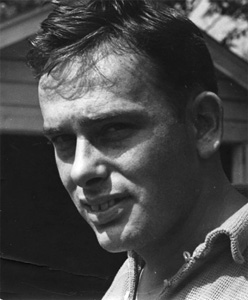
Joseph John Jones (1909–1963) was an American painter, landscape painter, lithographer, and muralist. Time magazine followed him throughout his career. Jones was associated with the John Reed Club and his name is closely associated with its artistic members, most of them also contributors to the New Masses magazine.
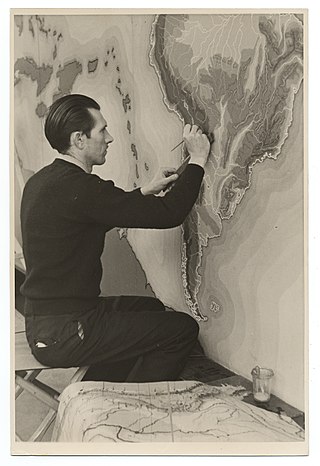
Guy Maccoy was an American artist known for his serigraphs.
Achelous and Hercules is a 1947 mural painting by Thomas Hart Benton. It depicts a bluejeans-wearing Hercules wrestling with the horns of a bull, a shape the protean river god Achelous was able to assume. The myth was one of the explanations offered by Greco-Roman mythology for the origin of the cornucopia, a symbol of agricultural abundance. Benton sets the scene during harvest time in the U.S. Midwest.
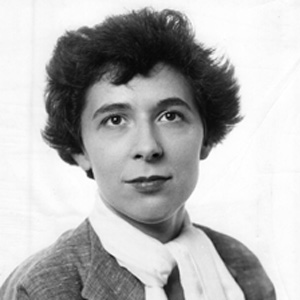
Martyl Suzanne Schweig Langsdorf was an American artist who created the Doomsday Clock image for the June 1947 cover of the Bulletin of the Atomic Scientists.

Miriam McKinnie also known as Miriam McKinnie Hofmeier, was an American artist.

Frederick Conway (1900–1973) was an American artist.

James Duard Marshall was a painter, lithographer, museum director, and art conservator who lived most of his life in Kansas City. Duard [pronounced "doo-erd"] was a student of Thomas Hart Benton and is best known for his 30-foot mural created for the centennial of Neosho, Missouri in 1939. The civic leaders of Neosho had approached Benton to produce the mural, as Benton had been born in Neosho, but he suggested that his student Marshall do the job. That mural hangs in the Neosho Newton County Library.

Jack Edward Barber was an American artist working in oil, egg tempera, acrylics, watercolor, lithography, and sculpture.

Hyman J. Warsager (1909–1974) was an American artist known for his printmaking.
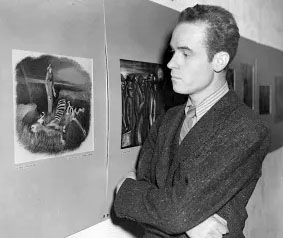
Bernard Joseph Steffen was an American artist known for his lithographs. He was part of the American Scene and worked at the Federal Art Project of the Works Progress Administration.
E. Oscar Thalinger (1885-1965) was an American artist originally associated with the American regionalist style. In his later career, he painted in an abstract style.
The Ste. Genevieve Art Colony was an art collective in Ste. Genevieve, Missouri. It was founded in 1932 by Aimee Schweig, Bernard E. Peters, and Jessie Beard Rickly. The Ste. Genevieve Summer School of Art was established in 1934. The colony was modeled on its most recent predecessor, the Provincetown Art Colony in Provincetown, Massachusetts, as well as The Shinnecock Hills Summer School of Art on Long Island, New York, the New Hope School in Pennsylvania, and the Taos art colony in New Mexico. The location of Ste. Genevieve contained rural vistas and genre scenes yet was close to the metropolitan Saint Louis area.

Matthew E. Ziegler (1897–1981) was an American artist associated with the American regionalist style. He painted the New Deal mural Wheat in the Shock in the Flandreau, South Dakota, post office. It was commissioned by the United States Department of the Treasury.

















